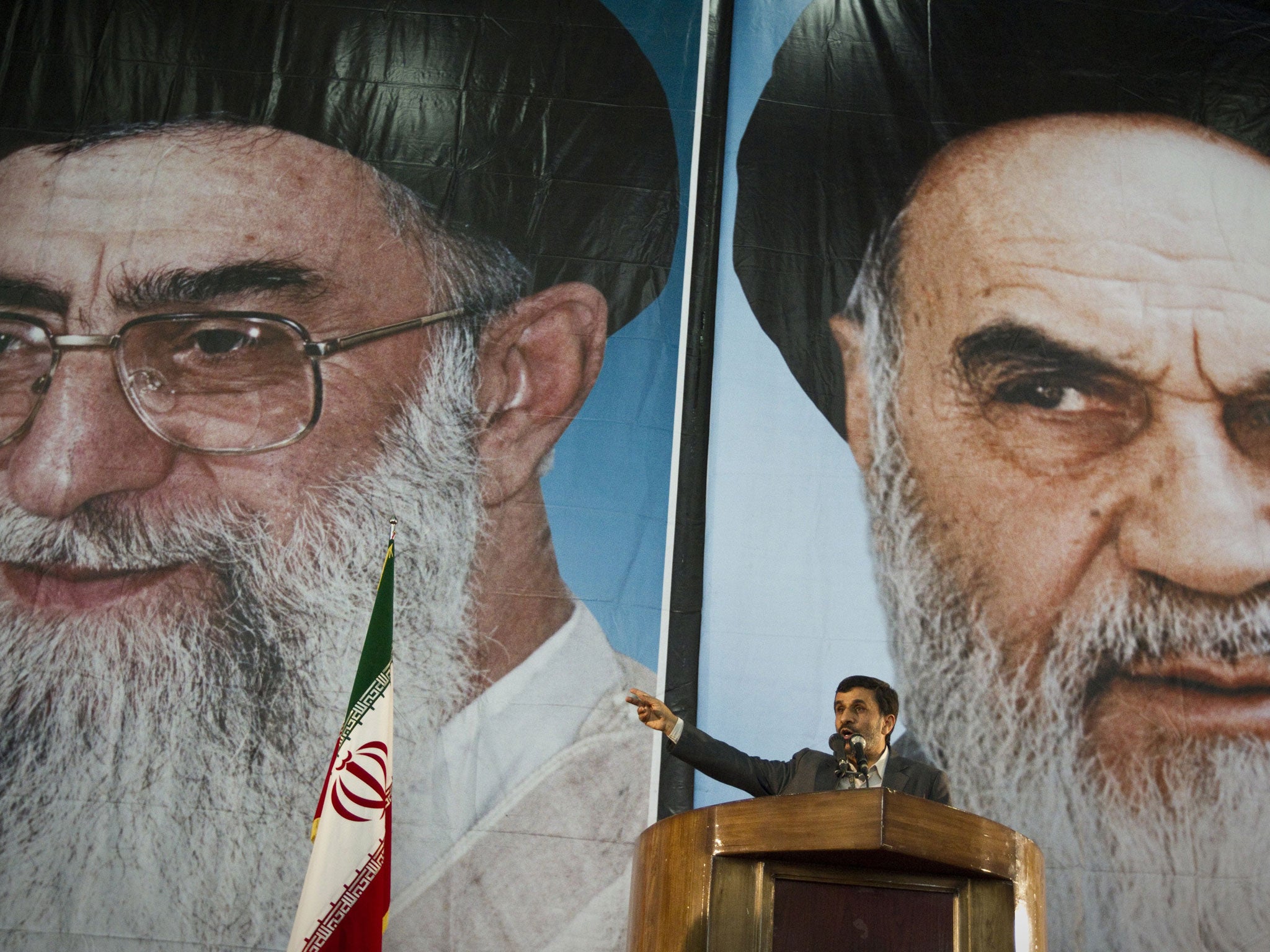Iran's clerical leaders cut presidency down to size
With 700 candidates – even Ahmadinejad’s preferred heir – barred, election is all but over

Your support helps us to tell the story
From reproductive rights to climate change to Big Tech, The Independent is on the ground when the story is developing. Whether it's investigating the financials of Elon Musk's pro-Trump PAC or producing our latest documentary, 'The A Word', which shines a light on the American women fighting for reproductive rights, we know how important it is to parse out the facts from the messaging.
At such a critical moment in US history, we need reporters on the ground. Your donation allows us to keep sending journalists to speak to both sides of the story.
The Independent is trusted by Americans across the entire political spectrum. And unlike many other quality news outlets, we choose not to lock Americans out of our reporting and analysis with paywalls. We believe quality journalism should be available to everyone, paid for by those who can afford it.
Your support makes all the difference.Even before a vote is cast, the Iranian presidential election on 14 June is effectively over as a process for choosing who holds power in Iran.
“I think it is not possible to run the country worse than this,” said the former President Ali Akbar Hashemi Rafsanjani, right, after he became one of 700 candidates barred from standing in the election this week. He is normally reticent in criticising the Iranian authorities.
There has frequently between tension between Iranian presidents and Iran’s supreme spiritual leader Ayatollah Ali Khamenei in the past. But by allowing only eight conservative candidates to stand in the forthcoming election, the aim is evidently to eliminate the presidency as a rival centre of power to the clerical leadership. The Guardian Council, the body that oversees nominations, had been expected to bar some candidates such as Esfandiar Rahim Mashaei, former chief of staff and political ally of the current President Mahmoud Ahmadinejad. But the rejection of Mr Rafsanjani has come as a surprise.
The present Iranian leadership has decided that it could not afford a drawn-out domestic political struggle along the lines of the last presidential election in 2009. This provoked huge protest rallies and government repression after the losing candidates alleged that the outcome of the poll had been fraudulently decided.
Iran is under even greater pressure today because of its increasing involvement in the war in Syria and sanctions on the Iranian economy over its nuclear programme. The West fears Iran is developing the capability to produce nuclear weapons. Iran claims the programme is for peaceful purposes.
Tehran has decided that it must fight for its long-term ally, the Syrian President Bashar al-Assad, because the Iranian leadership sees attempted regime change in Syria as a precursor to a similar assault on Iran and its Shia allies in Lebanon and Iraq. Ayatollah Khamenei, who supported Mr Ahmadinejad in 2009, later quarrelled with him and now wants to ensure that any future president will have limited capacity for independent action.
Ever since the Iranian Revolution overthrew the Shah in 1979, the presidency has been one of the centres of power in Iran, but is by no means the only one. Mohammad Khatami, who preceded Mr Ahmadinejad as president, was elected on a reformist agenda of which he was able to implement very little. Other important players in Iranian politics include the Revolutionary Guard Corps, which largely determines Iranian policy in Syria and Iraq.
Had a more flexible candidate, such as Mr Rafsanjani, supported by much of the middle class, been allowed to stand and had won the election, it was never inevitable that Iranian policy on Syria or the Iranian nuclear power programme would have changed. This is because in both cases Iran is not being offered much in return for concessions, as Western strategy is to inflict a public and damaging defeat on the Iranian government. Attempts at a detente with the West by former Iranian president Mohammad Khatami were largely rebuffed and achieved little.
In Syria, Iran has taken a more active role in recent weeks in combination with the Shia paramilitary movement Hezbollah in Lebanon. Hezbollah fighters are taking part in the battle for Qusayr, a strategic town near Homs in Syria and close to the Lebanese border. Iran is reported to have some 200 Revolutionary Guard advisers in Syria and is sending arms and equipment via Iraq.
The struggle for Syria is financially and politically draining for Iran, but the Shia in the Middle East in general increasingly see the Syrian war as a battle for survival.
Economic sanctions imposed since the middle of 2010 have had a severe impact on Iranians, with Iranian oil exports at their lowest level since 1986. Oil revenues were $69bn (£46bn) last year compared to $95bn in 2011. Food prices have risen sharply, the Iranian rial is in free fall and unemployment is at least 17 per cent.
Serious though the economic damage inflicted by sanctions is, not all the news has been bad. Previously surging oil revenues had enabled the Iranian state to subsidise food and fuel prices. These subsidies have now been largely reduced or abolished, a reform that might not have happened without the pressure of sanctions. The currency had also been grossly overvalued in the past.
The rise in the price of fuel has reduced the once horrendous Tehran traffic jams while the fall in the value of the rial has made it much more expensive for Iranians to take foreign holidays. Domestic industry has benefited, but sanctions are constantly being tightened so oil revenues will continue to shrink.
Join our commenting forum
Join thought-provoking conversations, follow other Independent readers and see their replies
Comments